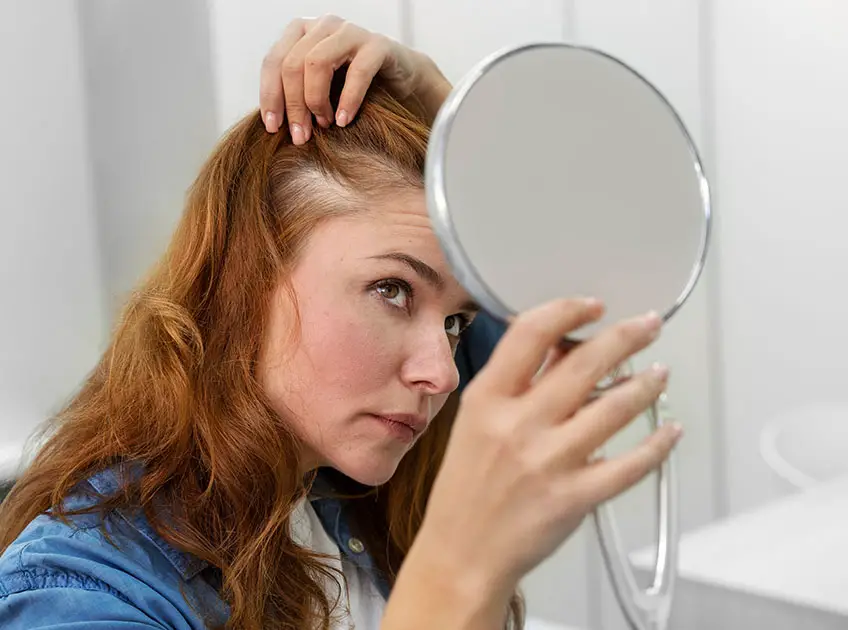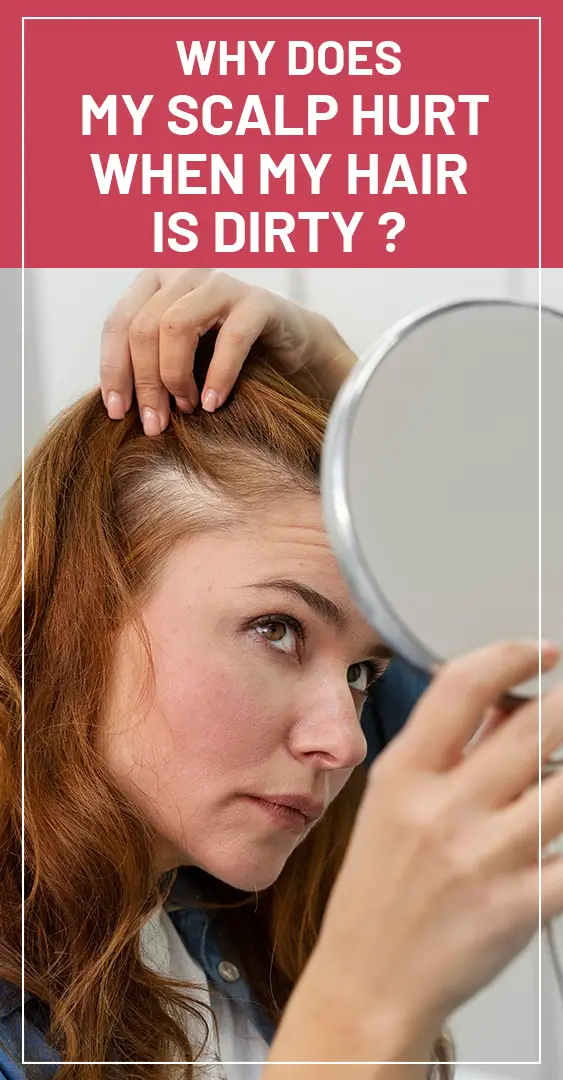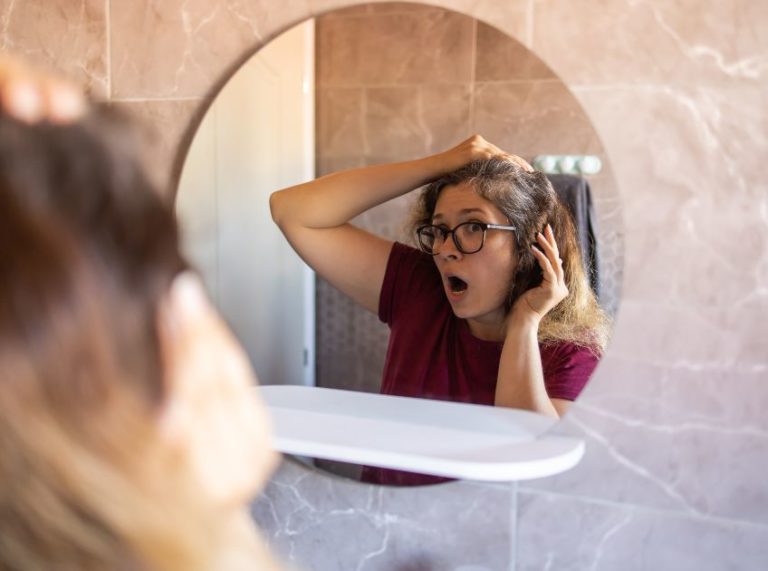
Important: This article is for informational purposes only. Please read our full disclaimer for more details.
Ever experienced how your scalp hurts when you haven’t washed your hair? It’s not just you. When your hair is not washed for too many days, many people experience this pain. But have you guessed why?
In this blog, we’ve discussed why the scalp hurts when you have dirty hair in depth. Let’s get into the blog.
Why Does The Scalp Hurt?
Your scalp may hurt when you don’t rinse your hair for more than a week. Even if you have an oily scalp, it produces oil naturally and accumulates near the hair shafts. Due to this, your scalp may cause itching, irritation, and pain. The ultimate overgrowth of yeast is the main cause of that throbbing pain in your scalp.
What Causes Inflammation Of The Scalp?
If your dirty hair hurts the scalp, there’s been huge progress between shampoos, dirt, sebum, and debris. They accumulate around the hair shaft and cause pain.
If you scratch your scalp, it may instantly relieve the itch or irritation for a moment. But the inflammation gets worse. In other words, the bigger the inflammation, the more enormous the pain experienced in the scalp.
If you use more dry Shampoo, you may block the follicles with too much hair product. This will lead to more oil secretion on your scalp.
A tight ponytail or bun will be another cause. Because the traction irritates the nerve ending on the scalp. This may end up in more pain.
Do You Know What Folliculitis Is?
Greasy hair roots cause more pain. Furthermore, when you experience pain, the skin and the perifollicular area of the scalp improve blood supply, nerve endings, and oil glands, and you end up with pain. Moreover, the bacteria can overgrow your scalp if you have an inflamed area.
Yeast Build-up
Another reason behind the scalp hurt is yeast build-up. The overgrowth of yeast happens due to a pH level imbalance on the scalp. This triggers irritation, pain, and itchiness.
Dandruff Causes Scalp Pain
An itchy scalp is the first sign. You may be tempted to scratch because of the tingling and stinging you feel. Burning can be felt. Scalp tenderness can turn into throbbing pain. The nerve endings, follicles, and blood vessels become inflamed if your scalp isn’t clean. At this point, dandruff and seborrheic dermatitis worsen. Overgrowth of yeast (Malassezia) is to blame.
Sensitive Scalp Causes Pain
You may have a sensitive scalp if your hair still hurts when moving or pressed. A sensitive scalp can result from all the coping mechanisms associated with postponing shampooing. As a result of the inflammation, the blood vessels press against the nerve endings in the scalp. It’s a painful result!
When it comes to skin conditions, things can get even more complicated. You should follow a balanced, appropriate washing routine if you have scalp conditions such as psoriasis, eczema, folliculitis, and seborrheic dermatitis.
[ Read: 7 Best Shampoos For Folliculitis ]
How To Get Rid Of Scalp Pain?
These are some of the few reasons your scalp hurts when the hair is dirty. So, do we have a solution or remedy to soothe the scalp? Yes, here we go.
1. Use mild Shampoo
You can relieve scalp discomfort and pain when you stop using harsh shampoos and conditioners. It is possible to soothe inflammation with gentle shampoos.
2. Aloe Vera
Hair and scalp pain can be reduced with the help of this healing ingredient. In addition to its soothing properties, aloe disinfects the scalp gently and replenishes its moisture. Thus, follicles are not clogged by it.
3. Use Essential Hair Oil
Using lavender, rosemary, lemon, or lemongrass essential oils gently cleanses and clarifies the scalp. Due to their powerful botanical extracts, they also soothe inflammation and nourish the body.
4. Apple Cider Vinegar
Using apple cider vinegar will eliminate gunk and grease from your hair roots. You can eliminate all problems if you use any anti-fungal shampoo containing apple cider vinegar. You stop yeast growth by stopping yeast growth, diminishing irritation, cleansing, increasing blood flow to the follicles, and boosting healing.
5. Use Lemon Juice
It has anti-inflammatory properties. Pain and tenderness in the scalp are relieved by it. Additionally, it restores the pH level of the scalp. Clarifying properties are also present.
6. Use coconut Milk
Put an end to scalp pain! You can use coconut milk in natural shampoos to soothe your scalp. Hair and scalp will not be stripped of their natural oils. It will not clog the roots, either. However, it will cleanse and hydrate the skin.
7. Use Activated Charcoal
There’s nothing better than activated charcoal! There are more than just oil glands on the scalp. A sweat gland is also present! To keep pain at bay, you need purifying Shampoo occasionally. It is important to choose one that is delicate yet effective.
8. Vegetable oils
In nature, shampoos can cause more harm than good for your hair. Because it contains sulfate, try a shampoo with potent vegetable oils like jojoba, moringa, coconut, avocado, or argan. They may help in healing and nourishing the scalp.
Bottom lines
Whether you are busy or not, If you have dirty or greasy hair, try cleaning it on a routine. So that you will be free from scalp pain or hurt.
You Might Also Like:
- Why Is My Scalp Lighter Than My Skin?
- How to Use Tea Tree Oil for Scalp?
- How to Maintain Healthy Hair: 16 Effective Tips For Healthy Hair
- How To Care For And Maintain Your Dreadlocks
- 7 Best Clarifying Shampoos for Colored Hair
- 7 Best Moisturizers For Scalp
- 7 Best Shampoos For Oily Scalp And Dry Ends
- 7 Best Shampoos For Excess Sebum
Image Credit: freepik
















